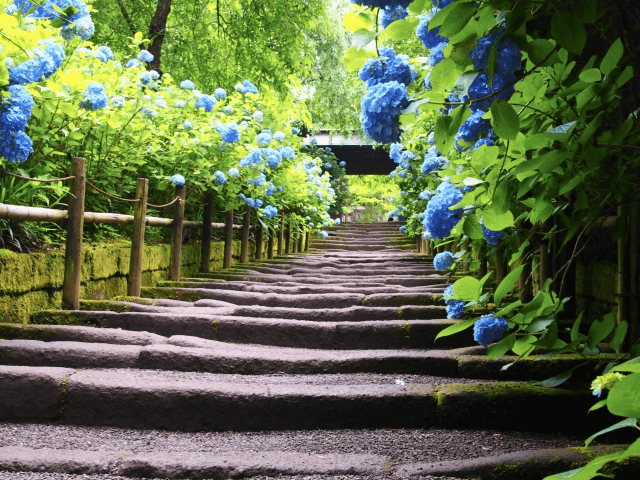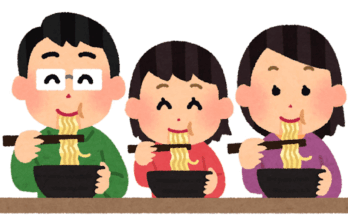Welcome to my blog about enjoying the Japanese lifestyle in June.
Rainy season has come in June in almost all of Japan except for Hokkaido in the northern part of Japan.
It is humid and wet, and some people feel depressed, so they don’t want to go outside.
However, rainy season has a bright side at seasonal events in Japan.

Seasonal events Part Ⅰ: Cherry picking
The amount of cherry production was 17,200 tons in Japan, and 76% was produced in Yamagata Prefecture in 2020 by the Ministry of Agriculture, Forestry, and Fisheries.
The cherry blossom is a famous flower in Japan, but it doesn’t make a big flutes.
It is said that it was brought from Europe during the Meiji era.
There are several kinds of cherries, one mixed with the other, and that keeps them improving.
The different types of cherries have different names, and they often include the word for red, (紅), sometimes the place they are from, and, rarely, the family name which it was invented by.
I had three or four experiences picking cherries in Yamagata Prefecture.
I remember we ate sato-nisiki (“Mr. Sato invented”).
The owner said there are some tips for the cherries to have a sweet taste and good shape.
The farmer picks five buds and leaves three so the lack of buds makes the others keep nutrients.
In addition to Yamagata Prefecture, there are many farms which invite cherry picking guests in.
The events start mainly from June to July, depending on kinds, at the greenhouse or outside.
One famer says the best way to pick cherries is to pick them by lifting the stems of the cherry upwards. This makes it easier to pick them.
Another farmer says that you take only fruits to protect new buds.
There are some local rules I suppose, but the taste is great!!

Seasonal events Part Ⅱ: Hydrangea viewing
Hydrangeas bloom during the rainy season, so it combines in our minds with images of rain.
The scientific name comes from the Greek “δοχείο νερού,” which means something like “water vessel.”
They grow in wet soil and need a lot of water, they dislike sunlight, and they turn green in the summer.
It is said that hydrangea is a native plant to Japan, but it was transported and reversed again to Japan.
They often live near the gardens of temples and shrines.
There are many people who want to see hydrangeas at the temples, nevertheless it rains.
The picture below was taken at the Meigetsu-in near Kamakura which is popular for viewing hydrangeas.The color of the flowers there is called Meigetsu-in blue.
Hydrangea have white, blue, pink, and purple flowers.
The Japanese language of flowers is below.
| Color | Language of flowers |
| White | Generosity |
| Blue | Patient love |
| Pink | Energetic women |
The color depends on the soil components.
If it is acidic, they turn blue; if alkali, it turns reddish.
By the way, hydrangeas are selected as a Mother’s Day gift these days. I think it relates to the language of flowers, but carnations are the most famous in Japan.

Seasonal events Part Ⅲ: Plum wine/juice making
The rainy season is written as “plum-rain” (梅雨).
Plum flowers bloom from February to June, then the nuts become big.
It is harvested from June to July, so it matches the rainy season.
Speaking of plum, it was handed down from China to Japan in the Asuka era (A.D. 500).
For our ancestors, “flower” meant “plum flower” at that time, which is most famously expressed in the Manyoshu, Japan’s oldest collection of waka poems.
I go grocery stores when the rainy season starts to get plums to make plum wine. It is so easy that I like to make it every year.
How to make plum wine:
- Wash plums, pull up stem, wipe plums
- Put crystal sugar and plums then pile up into a sterilized bottle
- Pour alcohol
- Wait six months
| Ingredient | amount |
| Plum | 1kg |
| Crystal sugar | 1kg (400-800g) |
| alcohol (normally in white liquor or shochu – distilled spirits) | 1.8ℓ |
In addition, my children want to drink plum juice, I am often asked.
However we had only one bottle so I bought another this year to make wine and juice.
How to make plum juice:
- Wash plums, pull up stem, wipe plums
- Freeze plums all day and night
- Put crystal sugar and plums then pile up into a sterilized bottle
- Wait two weeks
| Ingredient | amount |
| Plum | 1kg |
| Crystal sugar | 1kg |

Seasonal events Part Ⅳ: Chinowa kuguri
It has been almost a half year at the end of June.
It is said that we are not aware of being surrounded by bad fortune and guilt for six months.
Some shrines decorate a thatch circle in front of the prayer building.
Going through the circle three times, walking like a figure of eight, makes you become pure and prevents disaster. The rules are different for each shrine.
It is called chinowa kuguri. (Chinowa as thatch, kuguri as walk through)
One shrine says that, when ancestors suffered from disease, they made a thatch circle and walked through and then they overcame the disease.
Long ago, there were many misfortunes during summertime, so people wanted to be thankful for the previous six months and hope to live safely for the next six months.
This is the origin of this event.
I visit a shrine every year near my house, and the shrine has a chinowa.
I did it over ten times, but it was not in June and there were many people coming to pray for the new year’s wish. I just walked straight through.
Why I don’t visit in June? It may rain and we don’t have a national holiday in June.
I wish there was a place which has hydrangeas and chinowa, and apparently have a holiday, too. It is so comfortable for us.

Seasonal events Part Ⅴ: Father’s Day
I forgot to introduce MY event.
Father’s Day is the third Sunday in June in Japan.
There are different days among countries.
It started in the US around the 1900s.
It was transported to Japan in the 1950s, but it was spread by a strategy of department stores to get more sales.
At that time, it was recommended to give fathers something yellow, I didn’t remember this custom, probably because I was too young.
I gave a wallet a few times to my father on that day.
Maybe he forgot.
Father’s Day tends to be forgotten by family, and it is less popular than Mother’s Day.
Time passed, and I became a father.
I sometimes buy something for myself around Father’s Day, so it is MY event (LOL).
In summary, rainy seasons are not enjoyable because of wet, humid, and depressed feelings.
However there are many things we can do to be able to have fun in these times.
Let’s enjoy June!!

I have been learning English for about 3 years. I have joined many kinds of English schools or social networking to get knowledge and skills for English since then.
My target for learning English is not so clear but my curiosity leads me to make a conversation with everyone in the world with English.
See you somewhere!





 HTJ has a YouTube page! Check it out
HTJ has a YouTube page! Check it out